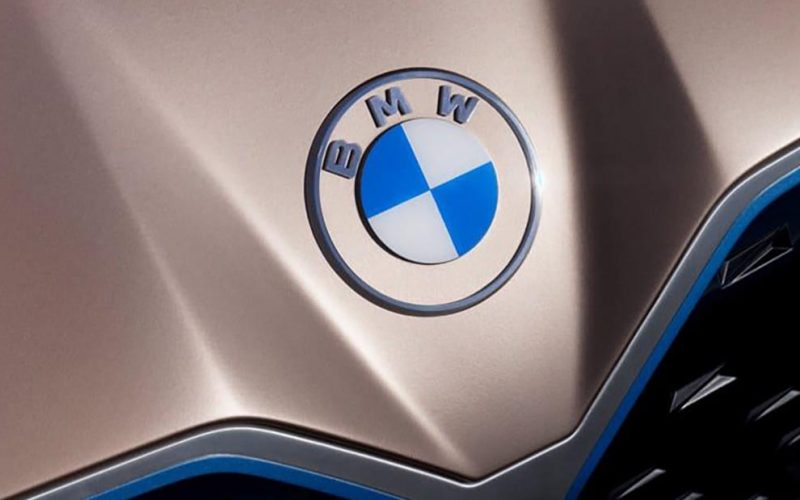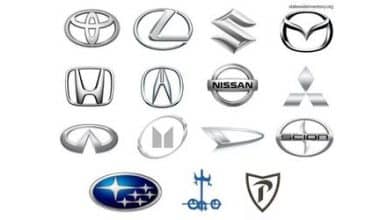BMW is a well-known brand all over the world, owing to its high standards in car production. This German manufacturer has been creating high-quality cars for over a century, including the BMW 3 series, which seemed to wow its customers. BMW cars, like those of Audi, Mercedes-Benz, and Porsche, are the most expensive to maintain. However, depending on your auto maintenance plan, you can keep your BMW car most cost-effectively and efficiently as possible. If you’re considering buying a new automobile or replacing your existing one, you should read this article to learn about the annual maintenance costs of a BMW and Mercedes before making the purchase.
This article will go through the BMW 3 series maintenance cost per year, as well as the most expensive and cheapest cars to maintain. You’d also learn why BMW and Mercedes respectively are among the most expensive cars to maintain including the maintenance plan that is worth it.
Most Expensive Cars to Maintain
BMWs, according to YourMechanic, are the most expensive to maintain while Mercedes takes the second place—they’re also infamous for having breakdowns that can cost you up to $3,688. Because of the way they’re manufactured, luxury car manufacturers often demand larger lump sums of money to repair.
Since certain car brands, such as Mercedes, Volvo and Audi, are known to survive a long time, the problem is most likely severe and requires prompt care. To keep your vehicle on the road for as long as possible, you’ll need to perform routine auto maintenance from tire rotations, oil changes, wiper replacements, and more.
Having said that, let’s take a look at some of the most expensive cars to maintain
#1. BMW
BMW is a big name in the car-making business. Given their name and reputation, BMW made the top list of the most expensive cars to maintain. BMW manufactures a wide range of vehicles, from luxury crossovers to sports cars. The cost of replacing vital automotive components, as well as the complexity of performing maintenance, can make owning this premium car prohibitively expensive for anyone.
Because each vehicle is handcrafted by the world’s best engineers, it is designed to last for years with no problems. However, when a breakdown occurs, eventually the repair can cost thousands of dollars due to the severity of the problem. Don’t be alarmed, they did say the car is designed by the world’s best engineers to last for years without a single problem
#2. Audi
Audi appears at number 2 to continue the trend of foreign vehicles topping this list of most expensive cars to maintain. It is a German luxury automobile manufacturer, remarkably similar to BMW in that it produces vehicles across all price ranges. They have everything from low-cost commuter automobiles to high-end sports cars.
Like BMW, Audi automobiles are packed with cutting-edge technology, which is also why they are so expensive to maintain. They will also have more expensive replacement parts, adding to the overall maintenance cost.
#3. Mercedes-Benz
Another big name in the car-making business to make the list of most expensive cars to maintain is Mercedes. Similarly to BMW, replacing vital components in a Mercedes-Benz can cost thousands of dollars out of pocket for people who do not have warranty protection. All their vehicles have been designed by the best engineers from around the world, making repairs more difficult to do.
When compared to Honda or Toyota, even used automobiles require thousands of dollars in maintenance, so having the correct extended warranty in place to cover both is critical if money is tight.
#4. Volvo
Many vehicles imported to the United States have far more modern technology and engineering than domestic ones. Owning a Volvo without an extended warranty can cost you up to $12,500 in maintenance fees alone, not counting insurance and other charges.
#5. Saturn
Moving on to the first domestic vehicle on our list, Saturn is a brand you would not think their cars as expensive to maintain as the ones mentioned above. Because Saturn automobiles are reasonably priced and the company is based in the US, many people anticipate that maintenance expenses will be reasonable.
While this is true for the majority of Saturns, the biggest cost stems from the regularity with which secondhand automobiles must be repaired and maintained. Saturns are notorious to have recurring problems, so you may expect to spend a lot of time and money fixing your Saturn.
#6. Chrysler
Chrysler is a somewhat diverse automotive manufacturer, with vehicles ranging from low-cost commuter vehicles to high-end luxury vehicles. It is one of the Big Three automakers in the United States and has been making vehicles for a long time.
Due to the general complexity and technology used in Chrysler automobiles, components and labour costs should be slightly more than average.
#7. Cadillac
Cadillac is a well-known automaker that many customers turn to when looking for comfortable, high-quality vehicles. However, the cost of new parts and repair timeframes have remained constant. Cadillac’s overall costs are a nice combination of retail and maintenance prices.
Even though they have built more cost-effective vehicles, these vehicles are still a little more difficult to work on than others, driving up maintenance costs.
#8. Dodge
Dodge is yet another prominent domestic automaker in the United States. They manufacture almost everything, from automobiles to SUVs to full-size pickup trucks.
While Dodge has its fair share of high-end sports cars, such as the Demon and Hellcat, the most expensive aspect of keeping these vehicles is the regularity with which they must be repaired. Dodge automobiles, while well-built, have a reputation for requiring extensive repairs.
#9. Mercury
Mercury, which is owned by Ford, is another domestic vehicle that, like Saturn automobiles, requires frequent repairs. It is one of the most expensive cars to maintain. The total parts and labour prices for Mercury automobiles are fairly low; it is the number of times your vehicle will be in the repair shop that will cost you. Because Mercury vehicles are no longer manufactured, the cost of repair parts will only rise with time.
#10. Pontiac
Last but not least is Pontiac, a GM division, which was founded in 1926 and produced its final vehicle in 2009. The most serious issue that Pontiac encountered was the replacement of the intake manifold gasket. According to yourmechanic.com, this problem occurred 19 times more frequently than in the average commuter car.
With Pontiac no longer in production, OEM replacement parts are bound to rise in price as demand grows. While finding a Pontiac may be inexpensive these days, it is crucial to consider how much you will spend over time.
Are BMW Expensive to Maintain
There appears to be a widespread belief among car enthusiasts that German cars, particularly older ones, are expensive to maintain. To be honest, this is mainly correct. The majority of German vehicles are premium brands, and premium brand vehicles require premium brand parts. As a result, the perception that BMW cars are expensive to maintain is not baseless.
When it comes to BMW auto maintenance, there are numerous aspects to consider: the car’s reliability, which types of parts often fail, where you buy your parts, and who does the job. Some BMWs, for example, are more reliable than others, however, newer models tend to be more uniform due to shared platforms, electronics, and parts.
Due to its standing as a premium product, a portion of the cost of BMWs is intended to retain the brand’s status. Below, we discussed 4 reasons why BMW cars are costly and equally expensive to maintain
#1. Reliability
BMWs have an undeserved reputation for being notoriously unreliable. However, the reality is that a BMW’s performance and longevity are mostly determined by the owner’s level of care and maintenance.
They can be extremely reliable machines if properly maintained. Several owners of well-maintained BMWs have testified to clocking well over 500,000 kilometres, as a result of good maintenance.
To be truthful, BMWs require more maintenance than normal, especially when compared to Japanese or US models. This is because they feature various intricate elements that can easily break down. After all, they are purpose-designed and developed for performance.
To get the most out of your BMW, you would have to go above and above the manufacturer’s recommended maintenance routine, although that may be more expensive.
#2. Performance
BMW cars are much more expensive to maintain than cheaper brands such as Toyotas because they give a top-tier performance. They have refined, high-performance engines that can operate smoothly for hundreds of thousands of kilometres if properly maintained.
Furthermore, they outperform in all essential performance categories, including horsepower, acceleration, handling, and braking. The 2023 BMW 3 series, for example, accelerates from 0 to 60 mph in 5.3 seconds. This is especially impressive given that the 3 series is one of the slower variants. BMW’s fastest flagship vehicles can do it in less than three seconds.
#3. Quality
Another reason BMW cars are expensive to maintain is the superior build quality. BMWs are unmistakable when it comes to vehicles with the greatest build quality. One of the primary focuses of BMW’s design process, like that of other German-made automobiles is balancing performance, style, and comfort.
Even the most basic BMW models have sturdy handles, knobs, and buttons, as well as perfectly fitting interior and exterior body panels that are pleasant to the touch. Interior finishings, electronics, rubber, paint, and metal sheet quality are among the best on the market for higher-end models.
BMWs also have exceptional sound and water insulation, making them ideal for driving in all weather. Older BMW models are extremely well-built and usually remain in excellent shape if properly maintained. Also, they are considerably easier to maintain than newer versions since they have fewer technological components.
#4. Comfort
Another important aspect contributing to BMW’s exorbitant sticker pricing is the company’s strong emphasis on comfort.
While most economy cars, such as Toyotas, have cloth interiors, most BMWs have leather finishes as well as a wide range of high-end materials. BMW vehicles also have a higher ride quality and excellent cabin insulation.
BMWs can charge exorbitant costs by providing a tremendously enjoyable driving experience.
Why Are BMW Expensive to Maintain
As explained above, BMW servicing is particularly expensive due to the company’s design and construction. Within the first decade, BMWs priced an average of $17,800. As a German performance-oriented premium brand, they are jam-packed with delicate speciality technology.
BMWs are prone to breakdowns if not properly cared for and maintained. Hence, owners must ensure that their mechanic has all of the necessary certifications to keep their BMWs in peak condition. Of course, as you can expect, qualified mechanics are not inexpensive. Worse, some models have strong V10 or V12 engines packed into small engine bays. Consequently, simple fixes such as changing a gasket may end up costing a lot.
Cheapest BMW to Maintain
BMW cars are, without a doubt, among the most expensive vehicles to maintain. Their maintenance costs are significantly higher than the industry norm, ranging between $700 and $1200 per year for routine maintenance alone. According to RepairPal, the average annual cost for regular maintenance and minor repairs is $968.
This is not surprising given that BMW cars are strong luxury vehicles, therefore, it’s only reasonable to expect hefty maintenance and repair expenditures. Nevertheless, don’t give up on your ambition of purchasing a BMW just yet, because we shall list and explain a few of the cheapest BMW to maintain — Not all BMWs necessitate extensive annual maintenance. So, let us look at those BMW cars that you can maintain in the cheapest way possible.
#1. BMW Z4
The Z4 is one of the cheapest BMW cars to maintain. A BMW Z4’s annual maintenance cost is expected to be $895, with oil changes being the most regular service required. When compared to the industry average, Z4 has a much lower frequency score.
It has a score of 2.19 compared to the industry average of 1.3. Furthermore, its severity score of 16 per cent, as determined by RepairPal, is considerably higher than the industry average of 12 per cent.
#2. BMW M5
Next is the BMW M5. The BMW M5 costs $1,173 a year to fix and maintain, depending on mileage and other factors. This is only a little more expensive than the X3.
Over ten years, the BMW M5 has a 40.39 per cent probability of requiring substantial repairs. Despite having a 0.83 per cent lower likelihood than other vehicles, the M5 is more reliable than the majority of them.
According to iSeeCars, an automotive analytics organization, the M5 is ranked seventh among cars with a high possibility of reaching 150,000 miles.
#3. BMW 3 Series
The BMW 3 Series is the third cheapest to maintain, with an average of $688 in repairs and maintenance in the first year and a total of $3,439 in the first ten years. According to Caredge.com, this is the case. You can look at a list of major BMW 3 series prices and compare them to locate the best deal.
A BMW 3 Series has a 40.39 % risk of requiring a major repair during the next ten years. When compared to similar cars, the BMW 3 Series is deemed to be underperforming. However, the E90 325i and 328i are the most dependable BMW 3 Series models.
#4. BMW X series
According to Repair Pal, the BMW X Series costs $490 per year on average to maintain, making it the cheapest BMW to keep. The X series has a 3% probability of experiencing major issues during its lifetime and requires 0.03 repair shop visits per year, compared to the industry average of 0.7.
Consumer reviews offer the X series a reliability rating of 4.5/5, so you can rest assured that you will not be paying for maintenance regularly. The BMW X Series’ most dependable years are 2007, and 2008. However, you might want to avoid the 2011 and 2008 models, which had numerous recalls and received middling dependability ratings.
#5. BMW X1
BMW XI is another significantly cheapest BMW vehicle to maintain. The BMW X1 Series will cost $915 to maintain, according to Repairpal. Although the car’s reliability is unknown, Consumer Reports gives it a reliability rating of 4.5/5.
Furthermore, the vehicle has a 0.03 per cent probability of developing major faults during its lifespan and necessitates maintenance. In comparison to the national average of 0.7, 0.02 repair shop visits are made per year.
The most dependable years for the X1 Series are 2013, 2014, and 2015, with the year model to avoid being 2012.
#6. BMW 5 Series
Finally, we have the BMW 5 series as the last of the cheapest to maintain when compared to the most expensive ones. The entire cost of maintenance and repairs for a BMW 5 Series is estimated to be $825 by Repairpal. Expect these prices to be lower or greater based on the vehicle’s mileage and age.
Among the cheapest BMW to maintain, the BMW 5 Series has a 40.39 per cent chance of needing a significant repair over its first ten years, with expenses projected to rise over time. Consider acquiring 528i and 535i versions from 2014-2016 for dependable BMW 5 Series automobiles with lower repair frequency. Years 2011-2013 should, however, be reconsidered.
Are Mercedes Expensive To Maintain
When it comes to Mercedes, one common question people ask is “are Mercedes expensive to maintain”? Well, worry not because this paragraph is dedicated to addressing that. When compared to other brands, Mercedes is quite expensive to maintain. In one research conducted by Your Mechanic, it came in second place, trailing only BMW’s maintenance costs. According to RepairPal, owners spend roughly $908 per year on maintenance and repairs for their Mercedes automobiles.
According to a customer review, he said “I observed that the majority of Mercedes are not any more expensive to maintain than other automobiles. They do, however, include certain unusual components that can be costly. The idea generally, is to maintain your Mercedes regularly, as you would any other car, expensive or cheap.
How much should I budget for monthly Mercedes repair and maintenance?
The cost of maintaining a Mercedes-Benz or any high-performance vehicle varies greatly depending on its condition, age, and type. Clearly, a high-performance V12 or V8 AMG engine necessitates more maintenance than a six-cylinder power unit seen in the majority of C and E Class cars. It is critical to repair your Mercedes Benz regularly, regardless of the year, model, or engine type.
In general, your Mercedes Benz should be serviced every 10,000 miles or once a year. Mercedes-Benz has a habit of alternating minor and major services. The minor service, formerly known as an A-Service, will normally cost around $200 and will include an oil service and inspection. The major service, formerly known as a B-Service, will include an A-Service as well as filters and computer resets. Typically, the primary service will cost roughly $400. Depending on the make and model of your Mercedes-Benz, extra conditional-based maintenance like brake fluid cleaning, transmission service (after 40,000 miles on newer models), and spark plugs may be required (typically at 100,000 miles).
Brakes are another popular maintenance component that is not related to a regular maintenance schedule. It is critical to utilize the correct grade brake pads and brake rotors for your Mercedes Benz. BE AWARE THAT NOT ALL BRAKES ARE CREATED EQUALLY. You get what you pay for, as the old phrase goes. Depending on your model and the level of performance you require, you can spend $50 or $250 on a set of brake pads. To maintain it properly, you should avoid the less expensive aftermarket brakes because they will not stop your Mercedes Benz as designed. Ceramic brake pads are a good aftermarket option with the added benefit of producing less dust.
Are BMWs reliable?
The fact that BMW was rated as one of Consumer Reports’ top 3 most dependable brands may come as a surprise in light of this. In order to win this distinction, it moved up 10 spots in the company’s 2023 ranking. Huh. BMW has never previously placed thus well in Consumer Reports’ reliability poll.
What are the cons of owning a BMW?
You’ll need high-end tires, premium fuel, and more expensive, foreign parts. Additionally, labor costs and a synthetic oil change will be higher. Final analysis: When it comes to maintenance costs, BMWs are at the top of the list.
What is the lifespan of a BMW?
Any BMW has the ability to go for up to 200,000 or even 250,000 miles with adequate care, and there will always be outliers that go even longer. Starting off on the right foot is simple because BMW Ultimate Care offers free factory-recommended maintenance with every new BMW.
What is the main problem with BMW?
Even if they are not a concern with current BMW models, oil leaks are one of the most frequent issues you have with BMW vehicles. BMW oil leaks typically originate at the transmission or at the corners of the valves. A malfunctioning gasoline pump can possibly be at blame.
Are BMWs worth buying used?
Keep away from used BMWs, especially those from the previous 20 years or more, according to many knowledgeable owners and mechanics. The money you will undoubtedly have to invest on them is simply not worth it. They are quite brittle, the parts are pricey, and the labor is exorbitant.
Related Articles
- HOW TO BECOME A STOCKBROKER IN US: The Simplest & Fastest Way
- CHEAPEST & FREE PAYROLL SERVICES FOR SMALL BUSINESS 2023 (Updated)
- GERMAN CAR BRANDS: The Most Reliable Brands in 2023 (Updated)
- EUROPEAN CAR BRANDS: Top 19+ Luxury European Car Brands in the USA
- INTRODUCTION TO MARKETING: Definitions, Concept, Principles, Types
Frequently Asked Questions
How bad is BMW maintenance
BMW owners, on average, pay $968 per year for maintenance and repairs, according to RepairPal. BMWs are expensive to maintain in comparison to the industry average of $652. BMW’s annual maintenance costs are comparable to those of other German luxury brands such as Audi ($987 per year) and Mercedes-Benz ($908 per year).
Is BMW worth the money
If you’re hesitating, it’s most likely due to the asking price. These automobiles are more expensive than other models, but they also have amenities that no other manufacturer offers. These are some of the reasons why BMWs are well worth the investment in terms of quality, luxury, performance, and dependability.
Is BMW or Mercedes better
In terms of interiors, Mercedes has superior interiors for smaller vehicles, but BMW has superior interiors for larger cars. A BMW may outperform a Mercedes in terms of performance, however, opinions may change depending on the model you drive. When given the choice, most people choose a BMW for road safety.
Which is cheaper to maintain BMW or Mercedes
BMWs are the most expensive automobile manufacturer to repair, according to Your Mechanic. BMW is first, with an average maintenance cost of $17,800 over ten years. Mercedes-Benz came in second, with an average 10-year maintenance cost of $12,900.
Do BMWs break down a lot
No, BMWs do not fail at a higher or lower rate than other vehicles. According to RepairPal, the average BMW will need to go to a repair shop for unscheduled maintenance 0.9 times every year. This is compared to an average of 0.4 times for all other automobile models.






